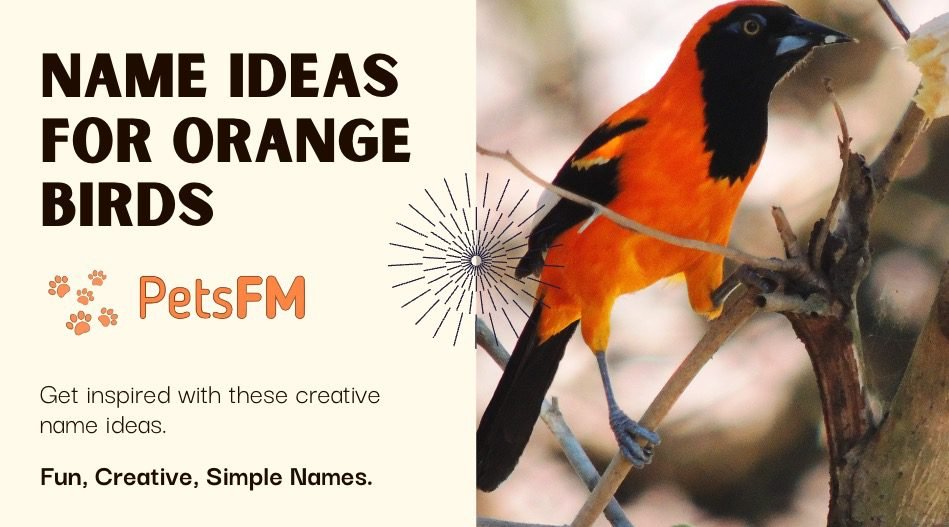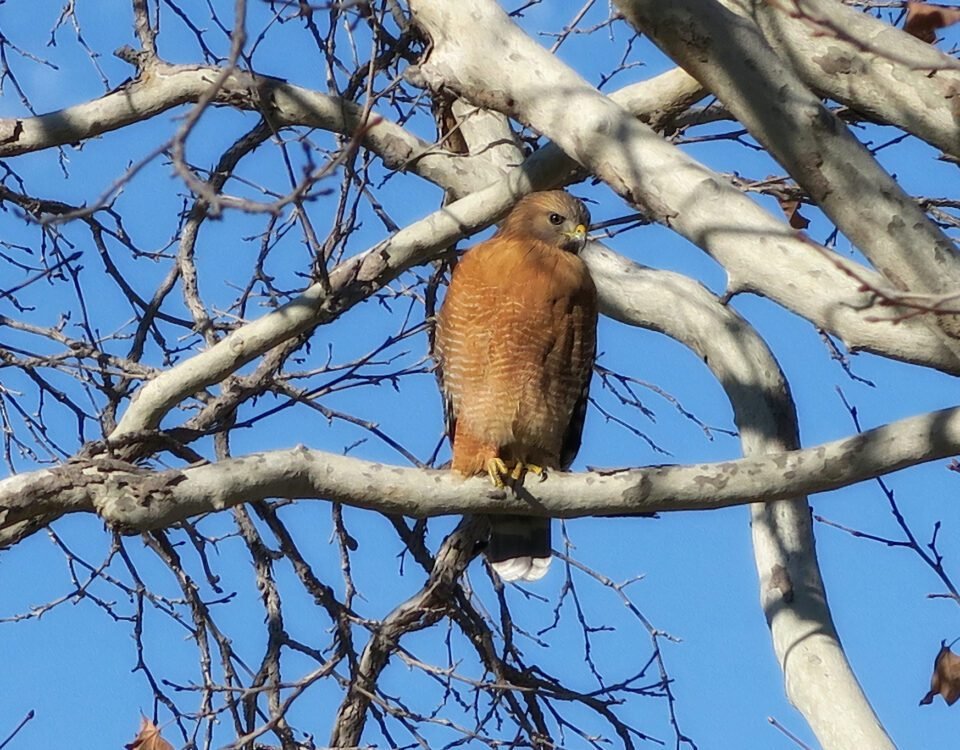


Can Birds Eat Boiled Potatoes? Is It Safe For Them?
October 11, 2023


100+ Bird Names In Arabic With Translation in English [UPDATED]
October 18, 2023The avian world is as diverse as it is vast. From the smallest hummingbird to the towering ostrich, birds exhibit various behaviors, habitats, and dietary preferences. One intriguing question that often arises when discussing these feathered creatures is, “Are birds carnivores?” Here’s a quick answer:
Indeed, some birds follow a carnivorous diet. However, it’s crucial to recognize they are an exception, as not every bird eats meat. The extent to which they consume meat also varies. While many birds, ranging from tiny flycatchers to majestic hawks, are carnivorous, multiple omnivorous birds surround their environment.
At a glance, the answer may seem straightforward, but when delving deeper into the dietary habits of various bird species, a more minute understanding emerges. Continue reading.
Are Birds Carnivores?
Some birds do have diets that categorize them as carnivores.
However, not all species fall into this category. Moreover, there are variations among predatory birds, differentiated by their primary food source.
Ecosystem health and the balance of food chains rely on the dietary diversity across different bird species.
If all birds were carnivores, the role of seed-eaters and nectar-drinkers in helping plant reproduction and seed dispersal would be compromised.
Conversely, if birds only fed on grains or insects, there would be an absence of avian predators to balance out populations. Each bird species plays a unique role in its respective ecosystem.
Birds are labeled carnivores when their diet mainly consists of flesh and other prey. These predatory birds predominantly depend on meat for their survival.


Related Read: Are Birds Herbivores? A Look at Different Bird Species
What Is A Carnivore, And What Are Its Types?
A Carnivore is an organism that derives its energy and nutrient requirements mainly from consuming animal flesh through predation or scavenging.
Types of Carnivores:
Obligate Carnivores:
-
- Organisms that rely exclusively or almost exclusively on animal flesh to meet their nutritional needs.
- They have evolved physiologically to consume meat and might find plant matter indigestible.
- Example: Cats are obligate carnivores and require a diet high in meat.
Facultative Carnivores:
-
- While they primarily consume meat, they can also derive nutrients from non-animal sources when necessary.
- These carnivores can consume plant matter or other non-meat foods occasionally.
- Example: Dogs can eat a varied diet but predominantly prefer meat.
Hyper-carnivores:
-
- Organisms with a diet that is more than 70% meat.
- These species might consume some plant matter or other foods but rely heavily on animal flesh.
- Example: Lions are primarily hyper-carnivores.
Meso-carnivores:
-
- Organisms with a diet that consists of 50-70% meat.
- They often consume a significant amount of plant material, insects, or other non-meat foods alongside animal flesh.
- Example: Raccoons have a varied diet but can be considered meso-carnivores in specific environments.
These categories highlight the spectrum of meat-eating behaviors and the adaptability of various species in meeting their nutritional needs.
Types Of Carnivorous Birds
The following are the types of predatory birds:
Scavengers
Scavengers are birds that primarily feed on the flesh of dead animals rather than actively hunting live ones. These birds play a crucial role in ecosystems, aiding in the decomposition process and preventing the spread of diseases by consuming carcasses. Their keen eyesight and sense of smell allow them to locate carrion from great distances.
Examples include vultures, such as the Turkey Vulture and the African White-backed Vulture, and some species of eagles, like the Bald Eagle, which will scavenge when the opportunity arises.


Vulture
Avivorous
Avivorous birds are those that predominantly feed on other birds. These predators have developed specific hunting skills, often marked by agility in flight and keen eyesight to detect and capture their avian prey.
Examples of avivorous birds include the Peregrine Falcon, known for its high-speed dives to snatch other birds mid-air, and the Sharp-shinned Hawk, which often preys on smaller songbirds.
Molluscivorous
Molluscivorous birds have a diet primarily consisting of mollusks, such as snails, clams, and other shelled creatures. These birds often have specialized beaks or techniques to extract the soft body of the mollusk from its protective shell.
Examples include the Oystercatcher, which uses its sharp beak to pry open shellfish, and the Common Snipe, known to feed on tiny snails and other mollusks in wetlands.
Insectivorous
Insectivorous birds have diets that mainly focus on consuming insects. Their feeding habits can help control insect populations, and their adaptability allows them to exploit various habitats.
Examples of these birds include the Swallow, which gracefully captures insects during flight, and the Woodpecker, which excavates tree bark to find and consume insect larvae.
Piscivorous
Piscivorous birds are those that primarily feed on fish. They are often found near bodies of water and have specialized adaptations, such as keen eyesight and specialized beaks, to catch slippery prey.
Examples include the Osprey, which dives to snatch fish from water surfaces, and the Great Blue Heron, which stands still in shallow waters to spearfish with its long, sharp beak.
Omnivorous
Omnivorous birds have a varied diet that includes both plant and animal matter. Their adaptability allows them to exploit various food sources based on availability. While they can consume meat, they eat seeds, fruits, insects, and other food types.
Examples of omnivorous birds include the Common Raven, which eats various foods from grains to small animals, and the American Robin, which feeds on fruits and invertebrates.


Robin
What Are The Characteristics Of A Carnivorous Bird?
Many birds fall under the category of carnivores, including raptors, owls, and those that predominantly feed on fish and insects.
These birds obtain their primary nutrition through hunting or by scavenging the remains of deceased animals.
Unique in its hunting technique, the Harris hawk teams as a family unit to capture prey. Multiple birds might dive at a single target, engaging in a tussle over it, but only the breeding pair typically gets to share the catch.
The bald eagle and the peregrine falcon have been observed snatching meals from other avian species.
Hence, several distinguishing characteristics are commonly found in predatory birds that aid in their hunting or scavenging:
- Excellent vision: For many animals, keen eyesight is pivotal when spotting food from afar or during high-altitude flights.
- Powerful feet: Predatory birds often have talons or specialized feet, enabling them to seize prey, whether it’s in water, on land, or airborne, subsequently delivering a lethal blow with their claws.
- Curved beaks: Birds with curved beaks have an advantage in piercing their catch, scooping prey, or extracting insects from the soil.
Must Read: Can Birds Get Fat? (How To Fix And Prevent Obesity)
How Do Carnivorous Birds Hunt For Prey?
Types of Hunting Techniques
Carnivorous birds employ various hunting tactics, targeting prey both in the skies and on land. Their hunting and feeding methods often adapt to their surroundings.
- Soaring and Diving: Birds often circle overhead, leveraging their keen vision to spot prey from aloft. They maintain a strategic distance until they spot the right moment to dive swiftly and strike.
- Hiding: By staying still or camouflaging themselves within their environment, some birds patiently lie in wait, springing into action when an unsuspecting prey ventures too close.
- Using Senses: Some birds capitalize on their heightened sense of smell or acute hearing to detect food. For instance, turkey vultures rely on their olfactory senses to detect carrion, while some owls use their exceptional hearing to silently approach and capture prey at night.
- Dining Interruption: Some birds, when feeding on a significant find, may momentarily withdraw, especially if a chance to snatch food from another source presents itself, only to return later and continue their meal.
Editor’s Pick: Can Hummingbirds Eat Ants?
Final Thoughts
Carnivorous birds, with their specialized hunting techniques and adaptabilities, highlight the incredible diversity and intricacy of the avian world. Whether employing the stealth of trap, the sharpness of their senses, or the sheer power of their dive, these birds are a testament to the fine-tuning of evolution.
Observing and understanding these magnificent creatures offers a deeper appreciation of the complicated web of life they are part of, reminding us of the continuous dance of predator and prey that sustains our natural world.



